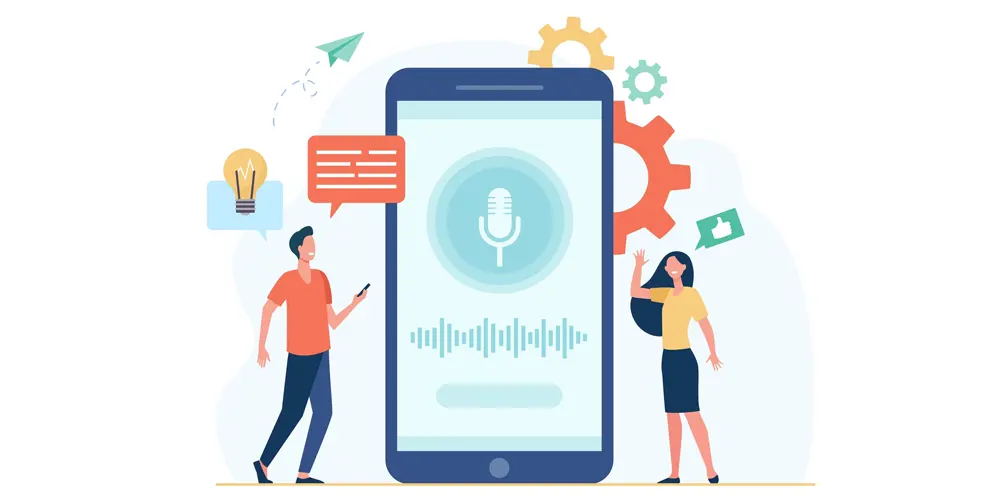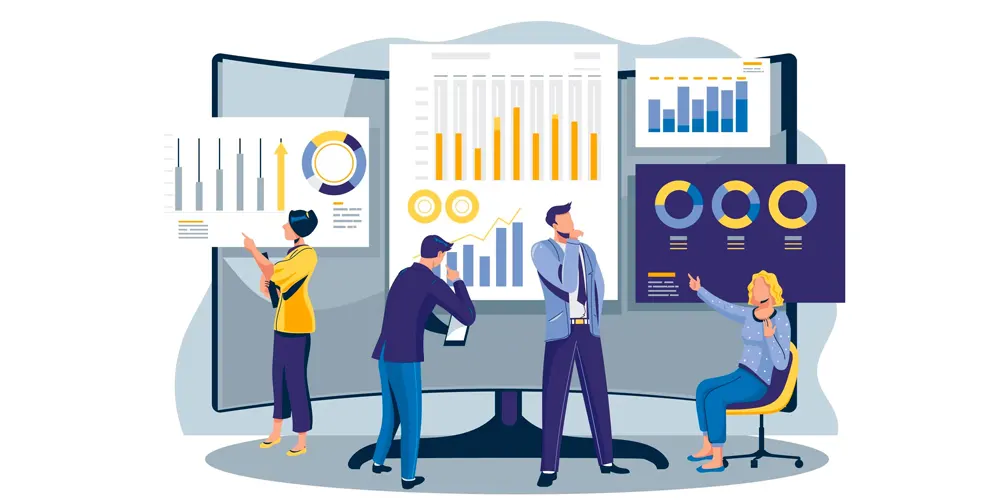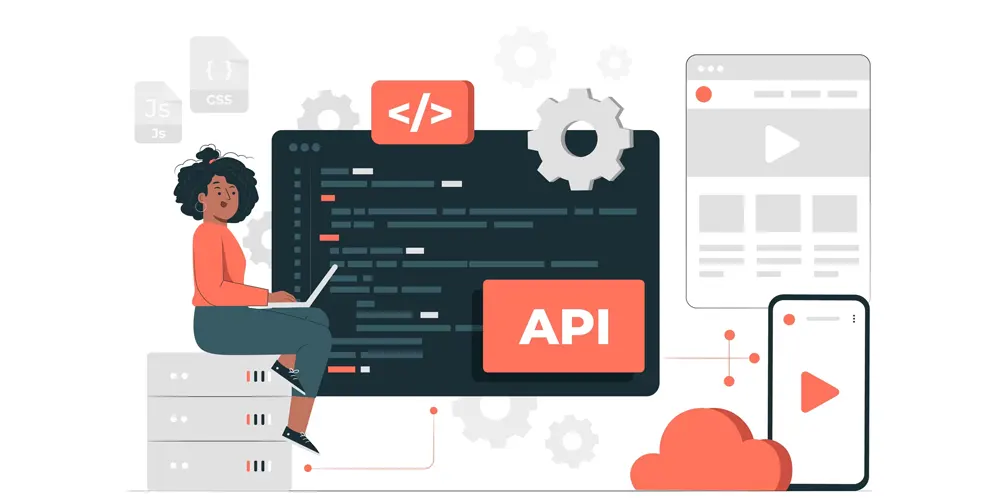10 Webphone Features that Benefit Your Business
The last few years have reshaped the business landscape drastically. The surprising thing is that it wasn't some technology but a global health crisis driving the change.
Businesses, big or small, are more or less run by people working from their homes. With a global market to serve, business communication technology has had to step onto the centre stage in the business world.
We have webphones leading the charge. They’ve turned out to be just the right answer for all the business communication requirements.
Most businesses still haven’t made the switch despite there being so many benefits of using webphones. We’re going to make that decision easy for business in this blog. We’ll be discussing the top 10 webphone features and how they benefit businesses.
Let’s begin then, shall we?
1. Call Recording

Call recording is a feature of web phones that allows businesses to record their inbound and outbound phone conversations. Webphones allow you to either record all or selected calls or record a certain percentage of calls at random.
This feature has several benefits for businesses, including:
- Training: Call recordings can be used to train new employees on how to handle customer inquiries and complaints. This can help improve customer service skills and ensure consistency in communication across the organisation.
- Quality assurance: Call recordings can be reviewed to ensure that employees are following company policies and procedures. This can help identify areas for improvement and ensure that all employees are providing a consistent level of service.
- Dispute resolution: Call recordings can be used as evidence in the event of a dispute with a customer or supplier. This can help resolve disputes quickly and efficiently by providing a clear record of the conversation.
- Compliance: Many industries require businesses to record all phone conversations for compliance purposes. This includes industries such as finance, healthcare, and legal services.
- Performance evaluation: Call recordings can be used to evaluate the performance of employees, including their communication skills and ability to handle difficult situations.
2. Intelligent Call Routing

Intelligent call routing is a feature of webphones that allows businesses to automatically direct incoming calls to the most appropriate employee or department.
This feature uses advanced algorithms to analyse factors such as caller ID, call history, and customer information. Then it determines the best available agent to handle the call.
There are several benefits to using intelligent call routing in a business setting, including:
- Improved customer service: With intelligent call routing, customers are quickly connected with the right person to handle their inquiries or request. This can help reduce wait times and improve customer satisfaction.
- Increased efficiency: By automatically routing calls to the most appropriate employee, businesses can reduce the time and resources spent on call transfers and repeat calls.
- Better resource allocation: Businesses can ensure that their employees are being utilised effectively. Calls can be directed to employees with the most relevant skills and experience. This further helps to optimise staffing levels.
- Enhanced call analytics: Intelligent call routing can provide detailed call analytics, including call volume, wait times, and call duration. This information can be used to identify areas for improvement and optimise call-handling processes.
- Personalised service: With intelligent call routing, businesses can customise their call routing rules to provide personalised service to customers. For example, calls from VIP customers can be automatically routed to a specific agent or department.
3. Interactive Voice Response (IVR)

Interactive Voice Response (IVR) enables callers to interact with an automated system through voice prompts or touch-tone inputs.
The IVR system routes incoming calls to the appropriate destination based on the caller's input or provides information to the caller.
The IVR system can provide several benefits for businesses:
- **Improve customer experience: With IVR, customers can easily navigate to the appropriate department, reducing wait times and increasing efficiency.
IVR systems can also provide customers with information such as business hours or addresses, or conduct automated transactions such as placing an order or scheduling an appointment.
- Increase efficiency: IVR can help businesses automate routine tasks such as answering frequently asked questions or directing calls to specific agents or departments. This can free up employees' time to focus on more complex tasks, resulting in increased productivity and efficiency.
- Cost savings: IVR can help businesses reduce costs associated with hiring additional staff to handle incoming calls. Thus, businesses can get away with maintaining a smaller workforce without compromising on customer experience.
- Data collection: IVR can also be used to collect valuable data about customers. This may include their reason for calling, their location, or their preferences. This data can be used to improve the customer experience or to inform business decisions.
- Personalization: IVR can be programmed to recognize repeat callers and provide personalised greetings or services based on their history with the company. This can help to build customer loyalty and increase customer satisfaction.
4. Call Analytics

Call analytics allows businesses to gather data and insights about their phone calls. Webphones can capture data such as call duration, call volume, call wait times, and caller demographics.
This data can be used to provide insights that can help businesses improve their call-handling process and overall customer experience.
Here are some ways in which call analytics can benefit businesses:
- Improved customer experience: Call analytics can help businesses identify areas where customers may be experiencing long wait times or dropped calls. By identifying these issues, businesses can make adjustments to improve the customer experience and reduce frustration.
- Staff optimization: Call analytics can also help businesses optimize their staffing levels. By analysing call volume and patterns, businesses can adjust staffing levels. Thus, they can have only the required number of staff for given shifts.
- Performance monitoring: Call analytics can be used to monitor the performance of individual employees or departments. By analysing call data, businesses can identify areas where employees may need additional training or coaching.
- Marketing insights: Call analytics can also provide valuable insights into the effectiveness of marketing campaigns. By tracking calls, businesses can determine which marketing channels are driving the most calls and adjust their marketing strategy accordingly.
- Cost savings: By analysing call data, businesses can identify areas where they may be overspending on phone services or wasting resources on ineffective marketing campaigns. This can help businesses save money and improve their bottom line.
5. Automated Attendant

Automated attendant enables businesses to automate call routing and provide self-service options to their customers.
With an automated attendant, incoming calls are greeted with a pre-recorded message that prompts callers to select from a menu of options using their touch-tone keypad or voice recognition software. Some webphones even offer AI Auto Attendants.
Here are some ways in which automated attendants can prove beneficial for businesses:
- Improved call routing: Automated attendants can route incoming calls to the appropriate destination, such as a specific department or person, based on the caller's input. This reduces the need for a receptionist or operator to manually transfer calls. This increases efficiency and reduces wait times for customers.
- 24/7 availability: Automated attendants can provide customers with self-service options outside of normal business hours, allowing them to access information or conduct transactions at their convenience.
- Cost savings: Automated attendants can reduce the need for additional staff to handle incoming calls, resulting in cost savings for businesses.
- Personalization: Automated attendants can be programmed to recognize repeat callers and personalise their approach based on their history with the company. This can help to build customer loyalty and increase customer satisfaction.
- Increased efficiency: Automated attendants can automate routine tasks such as answering frequently asked questions or providing information about business hours or location. This can free up employees' time to focus on more complex tasks, resulting in increased productivity and efficiency.
6. Conference Calling

Conference calling allows multiple parties to participate in a phone call simultaneously. Conference calls can be in the form of audio or video calls.
Some people absolutely hate team meetings and then there are those who start them. Whatever the case, conference calling has improved teamwork and project collaboration a lot.
This feature can prove beneficial for businesses in several ways:
- Collaboration: Conference calling can facilitate collaboration among employees. This allows team members to discuss projects, share ideas, and coordinate efforts in real time.
- Remote work: Conference calling can enable remote employees to participate in meetings and discussions. Thus, they’re able to stay connected with their colleagues and contribute to the business regardless of their physical location.
- Reduced travel expenses: Conference calls can eliminate the need for employees to travel to a central location for meetings. The resulting cost savings can benefit the business.
- Increased efficiency: Conference calling can save time by allowing multiple parties to participate in a single call. This reduces the need for separate conversations or follow-up calls.
- Improved customer service: Conference calling can enable businesses to hold group calls with customers or clients. Thus, they can provide personalised service and address customer needs more efficiently.
7. Messaging via SMS and IMs

Messaging via SMS and IMs allows businesses to communicate with their customers and employees using text-based messaging. Some might say this method of communication is too rudimentary and that calls are better.
However, this is a large section of introverts who dread calls and would rather prefer text-based communication. So I suppose, not making your team members anxious by having to call them also counts as a benefit.
Besides that, this feature can prove beneficial for businesses in many ways:
- Improved communication: Messaging via SMS and IMs provides a quick and convenient way for businesses to communicate with customers and employees. They can quickly exchange information, answer questions, and address issues.
- Increased engagement: Messaging via SMS and IMs can help businesses to engage with their customers on a more personal level. This can help build stronger relationships and improve customer loyalty.
- Time savings: Messaging via SMS and IMs can save time by enabling businesses to quickly send and receive messages. Thus, reducing the need for lengthy phone conversations or emails.
- Accessibility: Messaging via SMS and IMs can be accessed from anywhere with an internet connection. Businesses thus, can communicate with customers and employees regardless of their physical location.
- Record keeping: Messaging via SMS and IMs creates a record of all communication. These records of past conversations can be useful for tracking customer interactions or resolving disputes.
8. Voicemail To Email

Voicemail to email allows businesses to receive voicemail messages as email attachments. Some webphones can even transcribe voicemails so you can read them quickly.
This is especially useful when you cannot answer the call but want to know what was the call made for.
This feature can prove beneficial for businesses in a number of ways:
- Improved efficiency: Voicemail to email eliminates the need for employees to call into a voicemail system to retrieve messages. Thus, they save time and increase productivity.
- Convenience: Voicemail to email provides a convenient way for employees to access voicemail messages. This allows them to listen to messages on their computer or mobile device.
- Accessibility: Voicemail to email enables employees to access voicemail messages from anywhere with an internet connection. They can stay connected with their customers and colleagues regardless of their physical location.
- Record keeping: Voicemail to email creates a record of all voicemail messages. This makes it easier for employees to track customer interactions or resolve disputes.
- Improved responsiveness: Voicemail to email enables employees to respond to voicemail messages more quickly. This can further improve customer service and enhance the overall customer experience.
9. Caller ID

Caller ID displays the phone number and/or name of the incoming caller on the recipient's phone or computer screen. Knowing who is calling can be helpful in many ways. You can answer the call promptly or just let it ring.
Moreover, this knowledge can also help you prepare for the call and know what to expect from a particular customer.
This feature can prove beneficial for businesses in a number of ways:
- **Improved call screening: Caller ID enables businesses to quickly identify incoming calls, allowing them to screen calls and prioritise important ones.
- Personalization: Caller ID can display the name of the caller, allowing businesses to personalise their interactions and build stronger relationships with their customers.
- Security: Caller ID can help businesses to identify and avoid fraudulent or spam calls, protecting against potential security threats.
- Record keeping: Caller ID can provide a record of incoming calls, making it easier for businesses to track customer interactions or resolve disputes.
- Improved efficiency: Caller ID can save time by eliminating the need to answer unwanted or unsolicited calls, enabling businesses to focus on more important tasks.
10. Integration with Business Tools

You can plug in webphones with most of the mainstream business tools out on the market. These business tools may include customer relationship management (CRM) systems, project management tools and more.
Most webphones also provide an API. This means you can also plug these webphones into any proprietary system that your organisation may have.
This feature can prove beneficial for businesses in a number of ways, including:
- Streamlined workflows: Integration with business tools allows employees to access important information and tools directly from their webphone. Thus, eliminating the need to switch between multiple applications and reducing the risk of errors.
- Increased productivity: Integration with business tools can improve productivity by automating routine tasks and providing employees with access to real-time data.
- Enhanced collaboration: Integration with business tools can facilitate collaboration by allowing employees to share information and work together more efficiently.
- Improved customer experience: Integration with CRM systems can provide employees with a complete view of customer interactions. This allows them to provide more personalised and effective customer service.
- Cost savings: Integration with business tools can reduce the need for businesses to invest in multiple software applications, resulting in cost savings for the organisation.
Concluding
All in all, one thing that’s clear from this article is that webphones are a powerful tool at the disposal of businesses. Communication remains an important business function and webphones are enhancing this function quite capably.
If we observe carefully, we’ll see a repeat pattern in terms of the benefits of each feature. Generally speaking, each feature helps businesses be more efficient, reduce expenses, improve communication and provide better customer service and experience.
All of these small improvements and savings can add up over time, enabling you to compete better.























































































































